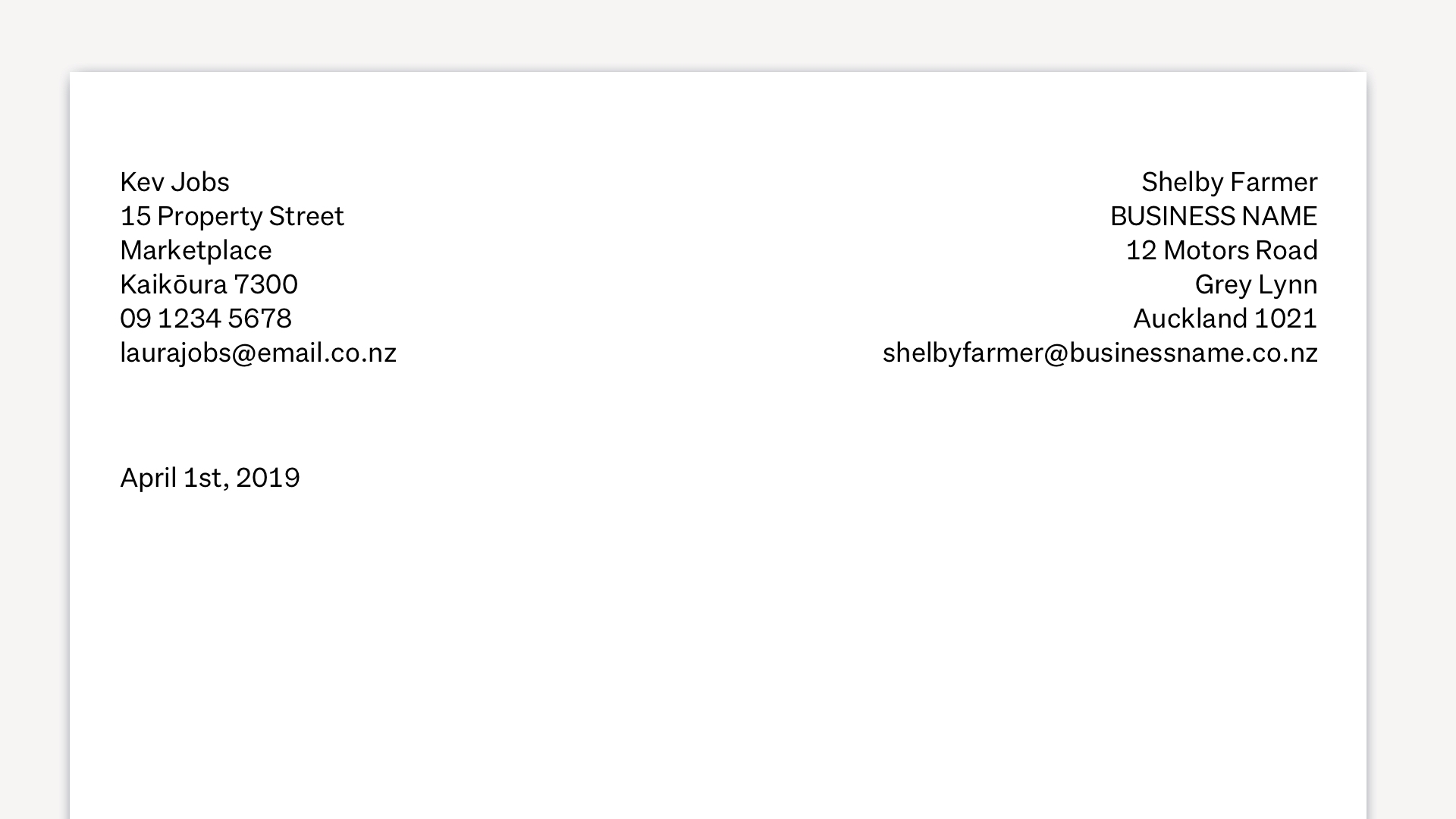
Along with your CV, a cover letter is essential to any NZ job application. Let's get you started.

Every New Zealand job application should include a cover letter.
This document is key to showing an employer you’re serious about their vacancy, and for demonstrating what you bring to the table. Despite its importance, many people aren’t sure how to write a cover letter – and their applications suffer as a result.
That’s why we’ve created this guide, giving you advice on everything from what to include, to how to lay it out.
We’ve also snuck in a few examples to make life even easier for you … aren’t we nice?
Free Cover Letter Templates Download our pack of fully customisable cover letter templates.
To understand the role cover letters play in job applications, it’s important to realise how they differ from CVs:
1. Purpose:
CVs give a broad picture of you as an applicant – providing details such as educational background and employment history. By contrast, a cover letter targets why you want this specific role, and how your skills and experience make you a great candidate.
While there will be areas of overlap as you select qualifications or abilities to draw out in your cover letter, it definitely should not be an elongated version of your CV.
2. Length
An NZ cover letter should be no longer than one page, while CVs are usually between one and two.
3. Format
The most obvious visual difference between these documents and CVs hinges around bullet points.
While your CV should be a bullet point bonanza, cover letters favour full sentences. That’s not to say you can’t have any bullets in a cover letter, just use them more sparingly.

You should include a cover letter with every job application.
At the top of your cover letter should be:
It should look like this:

Head up your cover letter like this.
People worry about how to start a cover letter, but there’s a simple formula and structure for getting this right:
Make it personal: start with ‘dear’, and address it to a person – i.e. the hiring manager. If their name isn’t in the job listing, try a good old fashioned stalk of the company website, or ring the business and find out. ‘To whom it may concern’ is a no go.
Make it clear: organisations often list multiple vacancies at a time, so make it obvious which position you’re applying for. A sentence like, ‘I’m writing to apply for the Marketing Assistant role, as advertised on Trade Me Jobs’, will do the trick.
Make it punchy: next, add a snappy one-liner summing up why you’re interested in the role and what you’d bring to their business. Remember, you can go into more detail in the interview itself. For example:
Example 1: